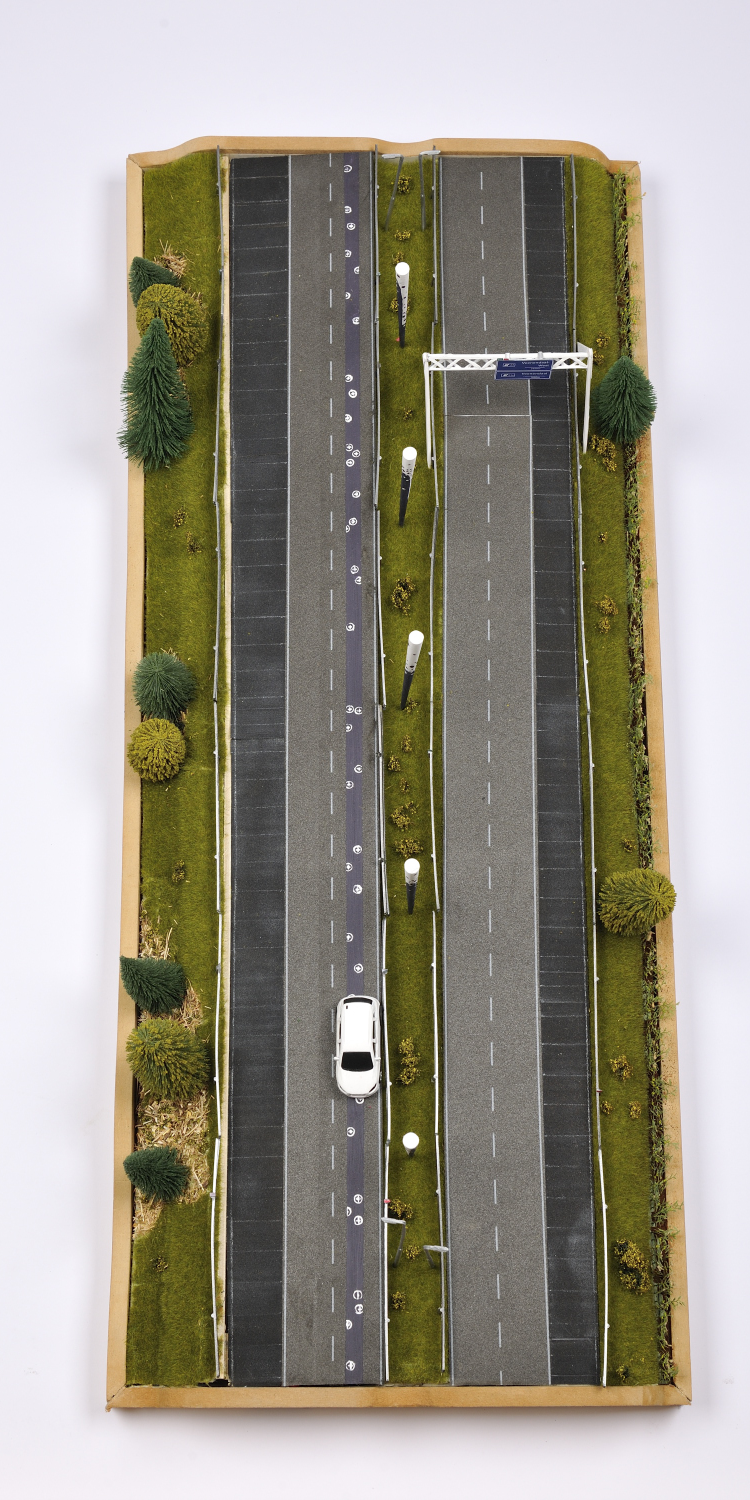Electric transport
“Now is the time to get ready for the wide-scale introduction of electric vehicles in our cities and our electrical power systems”
Pavol Bauer (right) and his PhD students |
Bauer has been working on inductive charging systems for electric transport since 2010. In his system, a coil embedded in the tarmac or paving stone transfers energy wirelessly to the car above it. It works like the charger for electric toothbrushes (See box, ‘Inductive charging’). Bauer has demonstrated transfer efficiencies of 90%.
Inductive charging tiles could take the place of luminescent charging points on industrial estates and in residential areas, and make the charging infrastructure nearly invisible. The next step, an electric taxi lane, could consist of a row of inductive tiles to make a charging lane of a few dozen metres. The advantage would be that electric taxis charge wirelessly while advancing to the head of the line. After a fare, the taxi returns for another charge. For autonomous cars, an inductive charging lane would also be ideal as the cars would not have to be left at set plug-in points.
“Integrating electric vehicles into the power grid properly means using green current from solar and wind energy,” explains Bauer. Only green electricity would reduce CO2 emissions to practically zero. Using mixed power, an electric car produces about half the carbon dioxide that a combustion car does. A test set-up in the lab simulates the charging of electrical cars using the solar energy from a roof in an industrial estate. A smart multiplex system directs the solar power to each of the cars consecutively.

Anyone wanting a quicker charge will pay extra. “We will see the emergence of dynamic power pricing,” says Bauer. “On sunny days, the power in the early afternoon may well become costless. In contrast, one may have to pay dearly in the early evening when the production is low and demand is high.” Electric vehicles may play a role in buffering these fluctuations in electric energy. In the near future, grid operators may well not charge households for the energy used (per kilowatt hour), but for the maximum power (kilowatt) of the connection. A one kilowatt connection may suffice for a house with a large photovoltaic unit combined with a storage unit. Grid operators will want to make it remunerative to draw less from the grid.
Much, if not everything, in the upswing of electrical transport, depends on the development of batteries. Bauer: "When the Tesla car was introduced, batteries were three times as expensive as they are today. The cars of the future will become cheaper and cheaper, which is the reason why I think that one million cars in the Netherlands by 2025 is a realistic scenario."
A small majority in the Dutch Parliament supported a resolution to speed up the introduction of electric transport last year. The motion stated that sales of combustion cars should be phased out by 2025. This is even faster than the Energy Agreement (Energieakkoord), which stated that the sale of combustion cars only need to be phased out in 2035. Apparently, our Parliament felt a need for speed. Whatever the year, the trend is clear: the rise in electric transport is increasing. Now is the time to get ready for the wide-scale introduction of electric vehicles in our cities and our electrical power systems.
Inductive charging
In the lab, a student places a model car on a table above a flat coil. He flicks a switch and the voltage of the car batteries rises. It's like magic: transferring power wirelessly. In principle, contactless power transfer (CPT) works just like a transformer. But there is no iron structure to link the coils. Instead, contactless power transfer uses a higher frequency (typically 100 kilohertz) and matching resonance frequencies to connect both circuits. Inductive charging has many advantages over contact charging. It is safer, easier and discreet. Current research focuses on optimising the power transfer efficiency and reducing stray fields.
Dynamic charging
On the 'highway of the future', solar panels in and along the road generate power, just like the vortex turbines that resonate in the wind. There is an endless array of coils embedded in the tarmac, which transfers energy without contact to the electric cars passing overhead. This is the concept of 'dynamic charging’. You would not need to stop to charge.The Netherlands' Authority on Roads and Waterways (Rijkswaterstaat) states that 'dynamic charging' is an opportunity to make road transport more sustainable.
The report An exploratory investigation into dynamic charging on main roads (December 2016) says: “The energy consumption of vehicles in combination with the required range and the need to keep the battery small (weight, space and cost) offers opportunities for dynamic charging at strategic points and routes.” The highway of the future may well start in the far right lane.
Text: Jos Wassink
Photo: Mark Prins
